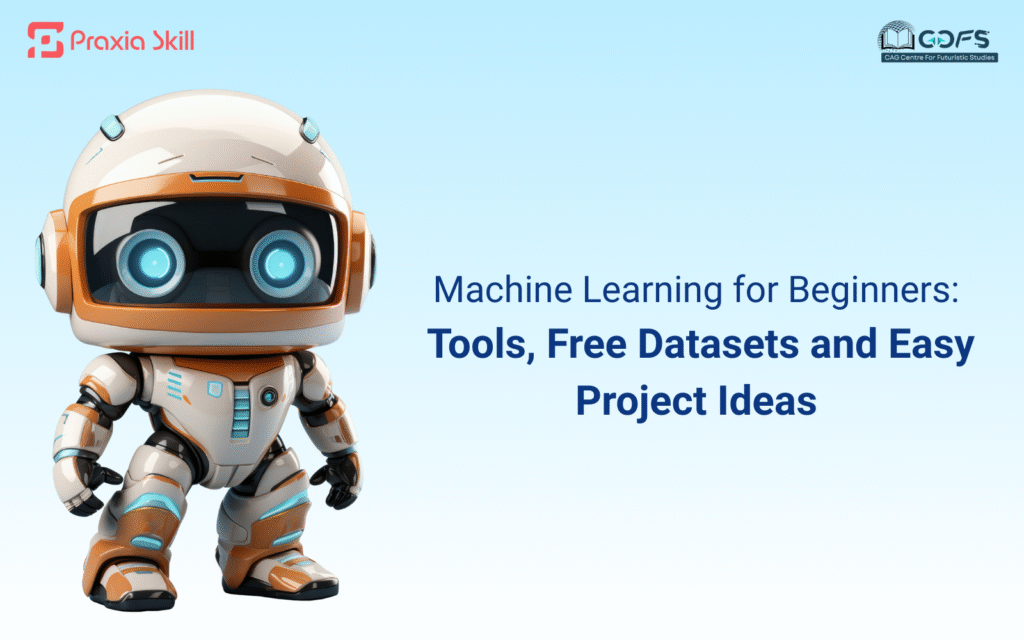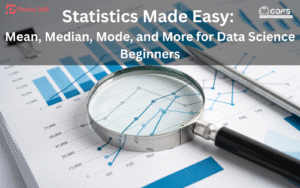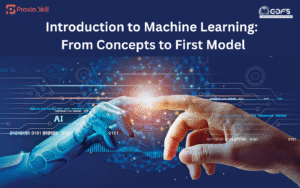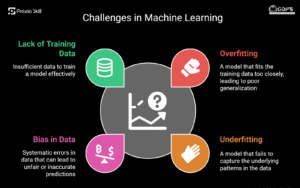If you’ve ever scrolled through your Netflix recommendations, asked Siri a question, or seen spam automatically filtered from your inbox, you’ve already witnessed machine learning in action. It’s no longer just for tech giants; today, anyone with curiosity and a laptop can start exploring it.
But here’s the truth: beginners often feel overwhelmed. “Do I need a PhD in math? Do I need supercomputers? Where do I even start?” The good news? You don’t need to be a genius or have endless resources. You need the right tools, datasets, and a clear learning path. Let’s break it down in simple, human language.
Popular Tools for Beginners
Machine learning may sound complex, but thankfully, there are user-friendly tools that do the heavy lifting for you. Here are three essentials every beginner should know:
-
Scikit-learn – Your First ML Toolkit
Scikit-learn is like the friendly starter kit of machine learning. Built for Python, it provides ready-to-use algorithms for tasks like classification, regression, and clustering. You don’t need to code everything from scratch—it’s as simple as importing a library, feeding in your data, and watching it make predictions
Perfect for: Beginners who want to understand the basics without getting lost in advanced math.
-
TensorFlow – The Deep Learning Giant
TensorFlow, developed by Google, is more advanced than Scikit-learn. It powers deep learning models—those behind voice assistants, image recognition, and even self-driving cars. While it may feel intimidating at first, it’s worth learning because it’s widely used in industry.
Perfect for: Beginners ready to dive deeper into neural networks and real-world AI applications.
-
Google Collab – Your Free Playground
Imagine having access to a powerful computer without spending a penny—that’s Google Collab. It’s an online notebook where you can write Python code, train models, and even use GPUs (fancy processors for AI tasks) for free. No setup headaches, no installation struggles—log in and start experimenting.
Perfect for: Anyone who wants to practice ML without worrying about hardware limitations.
Free Datasets to Practice On
Learning machine learning without data is like learning cooking without ingredients—it just doesn’t work. Fortunately, there are numerous places to obtain free datasets.
-
Kaggle – The ML Community Hub
Kaggle is more than just a dataset library—it’s a community of data enthusiasts. You’ll find everything from beginner-friendly datasets (like Titanic passenger data) to advanced ones used in competitions. The best part? You can see how others solve problems, which is a great way to learn.
-
UCI Machine Learning Repository – The Classic Collection
This is like a museum of machine learning datasets. It has been around for decades, and many academic papers still use its collections. From medical data to social science surveys, you’ll find a wide variety of topics to play with.
Pro tip: Start small. Don’t rush into giant datasets with millions of rows. Even a simple dataset can teach you a lot about how models learn.
A Beginner-Friendly Learning Path
Machine learning is a marathon, not a sprint. Here’s a simple roadmap to keep you on track:
- Learn Python basics – You don’t need to be a Python master, but get comfortable with loops, functions, and libraries like pandas and NumPy.
- Understand ML concepts – Learn what “training data,” “features,” and “labels” mean. Grasp the difference between supervised and unsupervised learning.
- Play with Scikit-learn – Use prebuilt models for simple tasks like predicting house prices or classifying spam emails.
- Work with real datasets – Try projects from Kaggle or UCI. Even cleaning and preparing data are valuable skills.
- Explore deep learning – Once you’re confident, step into TensorFlow or PyTorch to explore neural networks.
- Build projects – Don’t just read—create. Projects help you apply theory and make your learning tangible.
Remember, consistency matters more than speed. Even 30 minutes a day can build a strong foundation.
Your First Project Idea: Movie Review Sentiment Analysis
One of the best beginner-friendly projects is sentiment analysis on movie reviews. The idea is simple: given a text review, can your model predict whether it’s positive or negative?
- Why this project?
- Text data is easy to understand.
- Immediate, satisfying results—you’ll see your model classify opinions correctly.
- You can use freely available datasets like IMDB reviews (found on Kaggle).
- How to do it (simplified):
- Collect a dataset of movie reviews labelled as “positive” or “negative.”
- Preprocess the text (remove stopwords, punctuation, etc.).
- Use Scikit-learn to build a simple model (like Naive Bayes).
- Train it on your dataset.
- Test it on new reviews and see how well it predicts sentiment.
That’s it—you’ve built your first machine learning model! It may not be perfect, but that’s the point. You learn by doing.
Final Thoughts
Machine learning isn’t reserved for scientists in lab coats or engineers with endless budgets. It’s open to anyone willing to start small, stay curious, and practice consistently.
- Tools like Scikit-learn, TensorFlow, and Google Colab make it possible to experiment even with limited resources.
- Datasets from Kaggle and UCI give you the raw material to practice.
- A clear learning path helps you avoid getting lost in the ocean of tutorials.
- And with a simple first project like movie review sentiment analysis, you can see machine learning in action—without the overwhelm.
So, if you’ve been waiting for the “perfect time” to start, here’s your sign: the time is now. Fire up Google Colab, grab a dataset, and take that first step. The world of machine learning is vast, but every journey begins with a single experiment.



